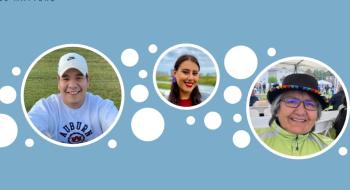Summary
Local Journalism Initiative Reporter
Windspeaker.com
The use of the Talking Stick app has grown tremendously since its launch last June, and it will continue to grow as individuals throughout Saskatchewan learn to trust the technology.
The Talking Stick app provides a safe and anonymous space for Indigenous youth and adults in the province to text with peer advocates about their personal struggles by sharing their private thoughts and feelings. The important thing about this app is that once a text conversation has ended, it automatically deletes from the history of the app.
“Since the fall (of 2022) it has really picked up and we are really starting to expand our network,” said Robert Gladue, a regional manager with Talking Stick.
“I want to emphasize it’s not just an app. It has grown into a community; sort of a community movement. We have people that are from all over the province. They are in the communities. They are doing presentations to the schools and to community events, and we are really pushing to really give that support that has been well needed.”
The app was developed through a partnership between the Federation of Sovereign Indigenous Nations and the Canadian health tech company, TryCycle Data Systems.
“It’s completely free,” explained Gladue. “We needed a support that was culturally sensitive. What I like about the peer advocates that we have on our team is you can find culturally sensitive relevant information in terms of being a guest user. When you are logging on and using our service, it is tailored to (Indigenous) people and that’s something that was lacking, something we didn’t have prior to the Talking Stick.”
The peer advocates are individuals from around the province living in various communities, and all are of Indigenous descent and are available to text with those who want some help.
Gladue stressed these are individuals who are not crisis counsellors or necessarily health professionals, but who have been trained to listen to the issues of the anonymous person and provide compassion and support from a cultural perspective in a non-judgmental way.
“Without knowing or without asking, I know what it’s like to live on a reserve. I know the hardships and I know the barriers between the haves and the have-nots. I know the difference,” said Burton O’Soup, a peer advocate for Talking Stick. He lives in Saskatoon but originates from The Key First Nation. “There’s no one to talk to sometimes in the communities.”
O’Soup is a licensed social worker, mental health worker and has the life experiences that provide him with the ability to help others who may be dealing with situations he has faced in his own life.
“When somebody has the same life experiences as you it’s easier to talk to them and open up about what you are going through. When they look like you, they sound like you and they have the same lived experiences, when you live on the reserve or living in the city dealing with racism, discrimination. Being asked why you look funny or how come you dress funny, it doesn’t feel good. Those aspects of shame start to filter into your mind over time,” O’Soup explained.
This past year O’Soup experienced the loss of one of his daughters to suicide. The 56-year-old said it has been a difficult journey dealing with the grief from such a significant loss.
“For First Nations, the services aren’t really there for the most part when you live in the communities, and that’s why I think Talking Stick is absolutely necessary. It gives people an outlet, especially our young people, somewhere to turn to to talk to somebody.”
People who use the app might be dealing with grief, bullying, addictions, financial hardships or have a variety of other issues.
Users of any age are welcome to use Talking Stick, as long as they are able to download and use the technology.
Currently, Gladue and his team are researching ways to encourage elderly individuals from the communities to use the platform.
“We are looking at how we can reach our elderly audience because a lot of them aren’t fluent in English or tech savvy,” Gladue said.
Members of the peer advocate team spend 40 hours per month being available to users; as well, they travel to schools and community events to share information about Talking Stick.
“If it gets them through today and they wake up tomorrow, it’s a success because they are talking, they are sharing, no more hiding,” said O’Soup, adding he participates in as many events as he can.
There are two ways to access the platform. Get Talking Stick from the app store on any smart phone, or go to the Talking Stick website at https://my.talkingstick.app/#/guest/home
Never miss a Windspeaker article. Subscribe Today to our new Windspeaker Newsletter!
Local Journalism Initiative Reporters are supported by a financial contribution made by the Government of Canada.

